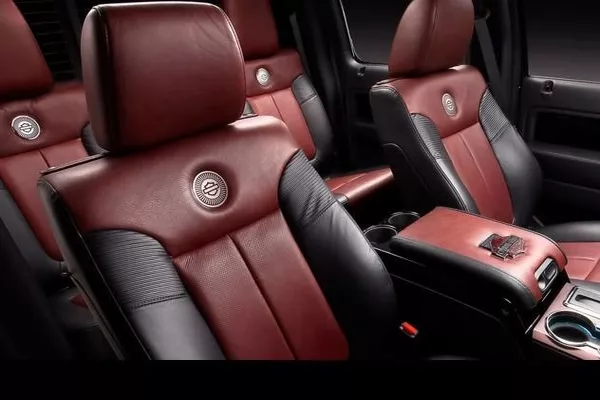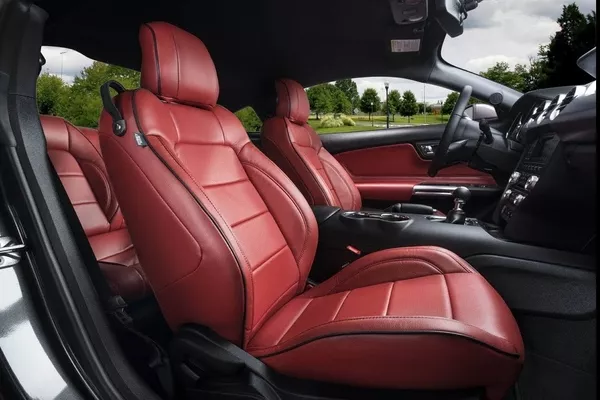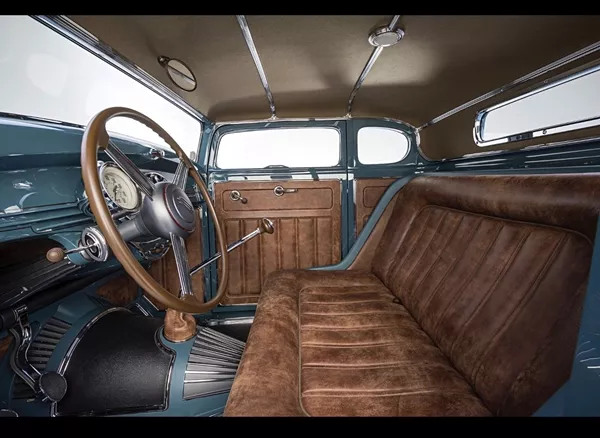Automobile upholstery is one of those elements that can really make or break the sale of a vehicle. As customers, we tend to look closely at every detail no matter how big or small it is to make sure that we’re buying is really worth every penny. The vehicle upholstery is no exception.
While it may sound “cool” or hip to get a black, glossy sedan with matching black, shiny seats without thinking it through but you may actually regret it in the long run. If you don’t give attention to what type of seat the vehicle is fitted it, you can end up sitting on a really hot seat (literally) after having your vehicle parked outside for a few minutes.
In this article from Philkotse.com, we’ll be uncovering everything you need to know about automobile upholstery fitting and what the newest innovation is that could blow leather out of the water.
1. Automobile upholstery
Long ago, automobile upholstery was largely influenced by suppliers. Vehicle manufacturers depended on suppliers because those who built and designed cars were engineers. These people were barely textile experts. Until later in the industry, the call for textile experts as in-house employees to vehicle manufacturers began. Nowadays, vehicle upholstery and overall design can be easily influenced by consumers.

Automobile upholstery was largely influenced by suppliers
When we say “automobile upholstery” we aren’t only referring to the seats. Textile material usually covers other parts of the interior, including the following:
- Headlines
- Carpets
- Trunks
- Door Trim
- Dash Mat
- Side Panels

Textile material usually covers other parts of the interior
>>> Read more: Must-have equipment to keep your car interior clean & organized.
The average amount of textile used in a vehicle will depend on its size; specifically, it's interior. Regardless of the amount of textile used, vehicle shoppers expect that the unit they plan to buy has the following guaranteed features:
- Good appearance and quality aesthetic design
- Comfortable for all ages
- Easy to maintain
- Retains its good properties even after prolonged use
- Durable and resilient
- Resistant to wrinkling
- Stain and waterproof
- Completely anti-static and has Oil Release Property
- Flame Resistant
- Affordable or reasonably priced

Vehicle shoppers expect that the unit they plan to buy has good appearance and quality aesthetic design
2. What makes a quality automobile upholstery?
Automobile manufacturers don’t just produce vehicles so their customers can have something to ride on. A lot of them manufacture and produce vehicles to fulfill needs and provide value to their customers.
That’s why cabin seats aren’t just plain seats; they’re also a subject that once brooded over by some of the industry experts just so they could deliver comfort and satisfaction to their clients.
The list below showcases the different criteria that every element of the upholstery should pass before it makes it into the market.
- Resiliency
- Resistance to abrasion and friction
- Pull resistance
- Compression resistance
- Air permeability
- Elasticity
- Colorfastness at high temperatures
- Ease of maintenance and cleaning
- Dimensional stability
- Fog resistance
- Resistance to the extreme and juxtapose weather conditions
- Reaction to different cleaning chemicals
>>> You might concern: Must-know steps on how to clean different types of car seats.
3. Common types of automobile upholstery and what are their differences
Manufacturers continue to innovate the elements that affect not only the performance of their units but also its aesthetics and comfort factor. They also try to come up with various gimmicks, designs, and innovations that may appeal to customers to boost their sales more. This applies to the car seat as much as other parts of the vehicle.
Some of the common choices for automobile upholstery and seat cover are the following:
Leather
The presence of leather in a vehicle is one of the main indications that it’s not going to be cheap. We can’t really blame why leather costs so much. Any car enthusiast knows all the good reasons as to why leather seats are connected with class and a lot of money. First of all, leather gives off a look that signals durability,

The presence of leather in a vehicle is one of the main indications that it’s not going to be cheap
Asides from that, it can also look well in almost all vehicles. What’s more, leather also has properties that let it become soft or firm depending on what the manufacturer needs it to be. Even though leather is costly, its cleaning process and maintenance is fairly easy.
To clean leather upholstery, just dampen a clean, soft cloth with upholstery cleaner and wipe away. Don’t forget to use a car vacuum for a more thorough clean. You can also consider adding leather wax to protect the seats. Just make sure to let the leather dry naturally before sitting on it.
Faux leather
Faux leather is the cheaper counterpart of leather. It bears almost all the desirable characteristics of leather except for the expensive price tag. The “faux leather” is usually made out of plastic, hence the name, pleather.

Faux leather is the cheaper counterpart of leather
>>> Check out: Do’s and Don'ts of Leather Car Seat Cleaning.
Vinyl
The vinyl we all know is the one that plays music from a long time ago. What we don’t know is that vinyl is a material that can be made into various other things. One of those is a comfortable automobile upholstery. Vinyl is rather durable and is very easy to clean. The material alone can last up to over ten years.
Pineapple fiber
Apart from the usual car upholstery materials, a resourceful tourist discovered a more sustainable way to outfit vehicle interiors. This fantastic discovery was first exposed by Ms. Carmen Hijosa, who has patented the product as Piñatex.

Ms. Carmen Hijosa patented the product as Piñatex
4. How was the Piñatex discovered?
Before she came up with the idea of Piñatex, Ms. Carmen Hijosa was a leather expert who first came to the Philippines to take a look at the local industry. To her dismay, she found out that leather quality here was poor and that its production would be bad for the environment. Instead, she studied how pineapple could be made into “leather.”
5. What makes Piñatex good for the vehicle interior?
First of all, Piñatex is made of pineapple leaves which are not necessarily the part that is useful to farmers and consumers. Second, the process of taking the fibers out of the leaves and converting it to leather-like material does not harm the environment or animals.
>>> Tips for you: 4 simple steps to do a proper car interior detailing.
Instead of being a threat to the environment, it actually uses waste and leaves a by-product that can be made as fertilizer. Unlike leather that uses harmful ingredients, the making and as well as the final product of Piñatex has no harmful effects on other living things.
Recent posts
- [Philkotse tips] Does your car interior ‘turn toxic’ in summer? Oct 01, 2019
- Car maintenance: 4 steps to remove interior scuff marks Aug 17, 2022
- A Guide to Remove Vomit from Car Interior Aug 17, 2022
- Steps to remove grease and oil from car interior Aug 16, 2022
- Helpful checklist for car interior cleaning Apr 09, 2020












